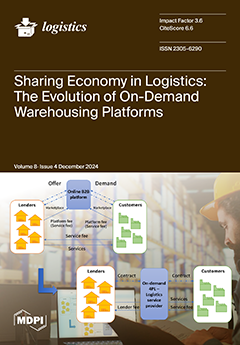Background: In the pursuit of sustainable energy sources, residual biomass has emerged as a promising renewable resource. However, efficiently managing residual biomass poses significant challenges, particularly in optimizing supply chain operations. Advanced modeling approaches are necessary to address these complexities. This study aims
[...] Read more.
Background: In the pursuit of sustainable energy sources, residual biomass has emerged as a promising renewable resource. However, efficiently managing residual biomass poses significant challenges, particularly in optimizing supply chain operations. Advanced modeling approaches are necessary to address these complexities. This study aims to develop a comprehensive methodological framework for creating simulation models tailored to agroforestry residual biomass supply chains.
Methods: The study employs a hybrid simulation approach, integrating geographic information system mapping with a case study analysis. The simulation was conducted over a 365-day period, using the anyLogistix software (version 2.15.3.202209061204) to model various supply chain dynamics. The framework also accounts for financial, operational, customer satisfaction, and environmental metrics.
Results: The simulation results showed a total expenditure of EUR 5,219,411.3, with transportation being the primary cost driver, involving 5678 trips and a peak capacity of 67.16 m
3. CO
2 emissions were measured at 487.7 kg/m
3. The model performed as expected, highlighting the need for sustainable logistics strategies to reduce costs, lower losses, and improve productivity.
Conclusions: This study presents one of the first detailed methodological frameworks for simulating agroforestry residual biomass supply chains. It provides valuable managerial insights into the financial, operational, and environmental aspects of supply chain management. The findings may stakeholders make informed decisions to enhance the sustainability of biomass utilization in energy production.
Full article





